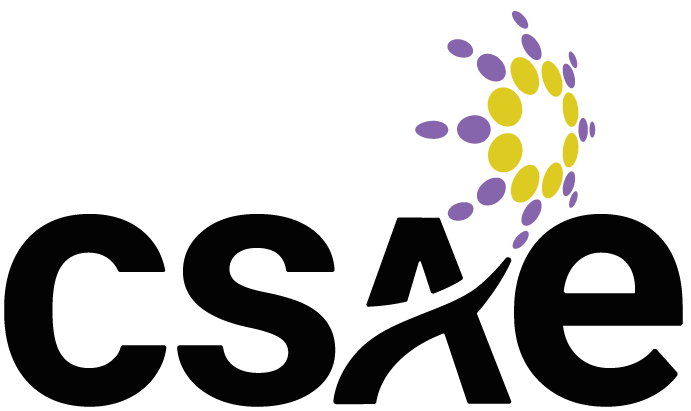How to Evaluate Association Member Needs: A CSAE Case Study

Authored by CSAE and Gerald Bramm
Your association members have needs. Your association will succeed if it can provide products and services that address these needs. But what are their needs and how do you evaluate them?
In 2021 CSAE conducted a member needs assessment with Bramm Research. A breakdown of our process may provide insights on how you might approach your own member needs assessment.
Evaluating your members’ needs can be a difficult research challenge. Why? Because it’s not easy for any of us to articulate what we need. To succeed, the researcher should avoid the direct approach and instead gather insights using a circuitous path. Keep the following two principles in mind:
Focus on Association Member Challenges
Ask members about their challenges, anxieties, fears, frustrations and headaches. Take their answers and apply thought and creativity to come up with programs and services that will address these challenges. This, in our opinion, is the essence of a “needs analysis”.
Cast a Wide Net
Have an open dialogue with your members and listen without judgement to their responses. Who knows what innovative ideas might emerge if we really listen to the challenges that our members are facing?
Elements of the CSAE Member Needs Assessment
Recently we had the chance to put theory into practice. In a research brief, CSAE asked Bramm Research to “Provide member insights and determine how CSAE can best meet member needs and expectations.”
In response to this brief Bramm proposed a three-step research program. It consisted of:
1) In-depth calls
2) Online focus groups
3) Online quantitative survey
Phase One – In-depth Interviews (Phone/Zoom Calls) with Association Members
Bramm began the research process with 14 in-depth conversations with members. These interviews were evenly divided between new members who had joined CSAE within the past year and more seasoned individuals who had been members for five or more years.
Our conversations included the following topics:
- Challenges and pain points prior to the onset of COVID-19
- Challenges and pain points over the course of the pandemic
- Challenges and pain points as we move into a post pandemic world
- How has (or can) CSAE help to alleviate these challenges/pain points?
These conversations were typically about 30 minutes long. As noted, we did have specific topics that we wanted to cover but we also kept a flexible approach that allowed us to pursue interesting avenues that popped up in the discussion.
Phase Two – Online Focus Groups with Association Members
Phase One yielded topics to be pursued in greater depth in the second phase of research. For this stage, we used online focus groups as our methodology. Although these groups can be held in real time, Bramm conducted the groups over a three-day period. This extended timeframe allowed for more thoughtful responses and gave respondents the chance to comment on the discussion as it unfolded. We recruited two separate groups with 16 respondents in each group. Group One consisted of members who had joined CSAE within the past year and Group Two was comprised of more seasoned members.
Each morning, the moderator posted a new set of questions. Respondents visited the site at their convenience and responded to the new questions. Once they had posted their response, they could see other responses and could enter into discussions with the other members. Throughout the day, the facilitator monitored the site and asked follow up questions that were directed either to specific individuals or to all members of the group.
Topics Covered in the Focus Groups:
Day One
• Personal/professional/association challenges over the past 14 months
• CSAE and other resources used
• What CSAE could have provided
Day Two
• Current issues and challenges
• Focus on remote work/future of events/revenue/member retention
• Resources that CSAE could provide
Day Three
• Skills needed for the future: What does success look like? Obstacles standing in the way
• CSAE’s focus for the future
• Value of CSAE/intangible value of membership
Phase Three – Online Quantitative Survey
The online focus groups generated a long list of member issues, concerns and topics of interest. Phase Three would quantify these challenges. This would help determine the key issues CSAE should be addressing and how these issues were distributed by association type and size.
To answer these questions, Bramm and CSAE worked together to develop an online member survey for executive members. This short survey was a blend of open-ended and close-ended questions. It asked the respondent to identify their key challenges and issues, concerns and topics of interest impacting their organization. Bramm’s analysis broke out these challenges and issues by type of organization and size, along with other demographic details.
By the end of the member needs assessment, CSAE had concrete data: a detailed list of challenges and concerns facing CSAE members. As well, we knew how these issues were distributed by association type and size. Armed with this information, CSAE was well positioned to develop innovative programs and services designed to address these challenges. The survey results were instrumental in shaping the new Strategic Plan for 2021–2025 and ensured that the member voice was strong and central. Click here for CSAE’s Member Needs Assessment Highlights Report.
While evaluating member needs can seem a daunting task at the outset, a well-planned and well-structured approach yields rich insights. This, in turn, provides associations with the data – and the confidence – needed to ensure their programs and services remain relevant and valuable, and member-driven.




















